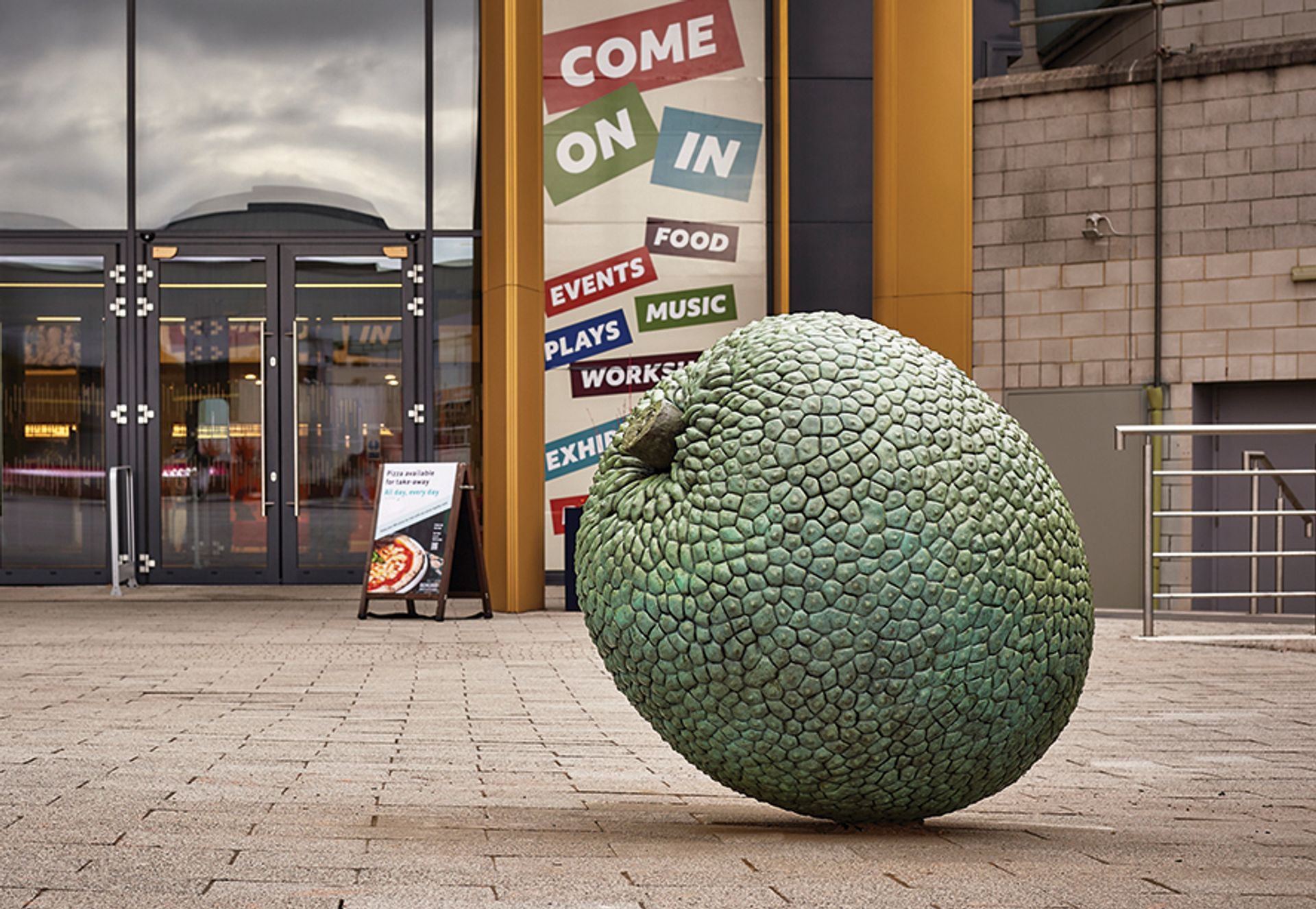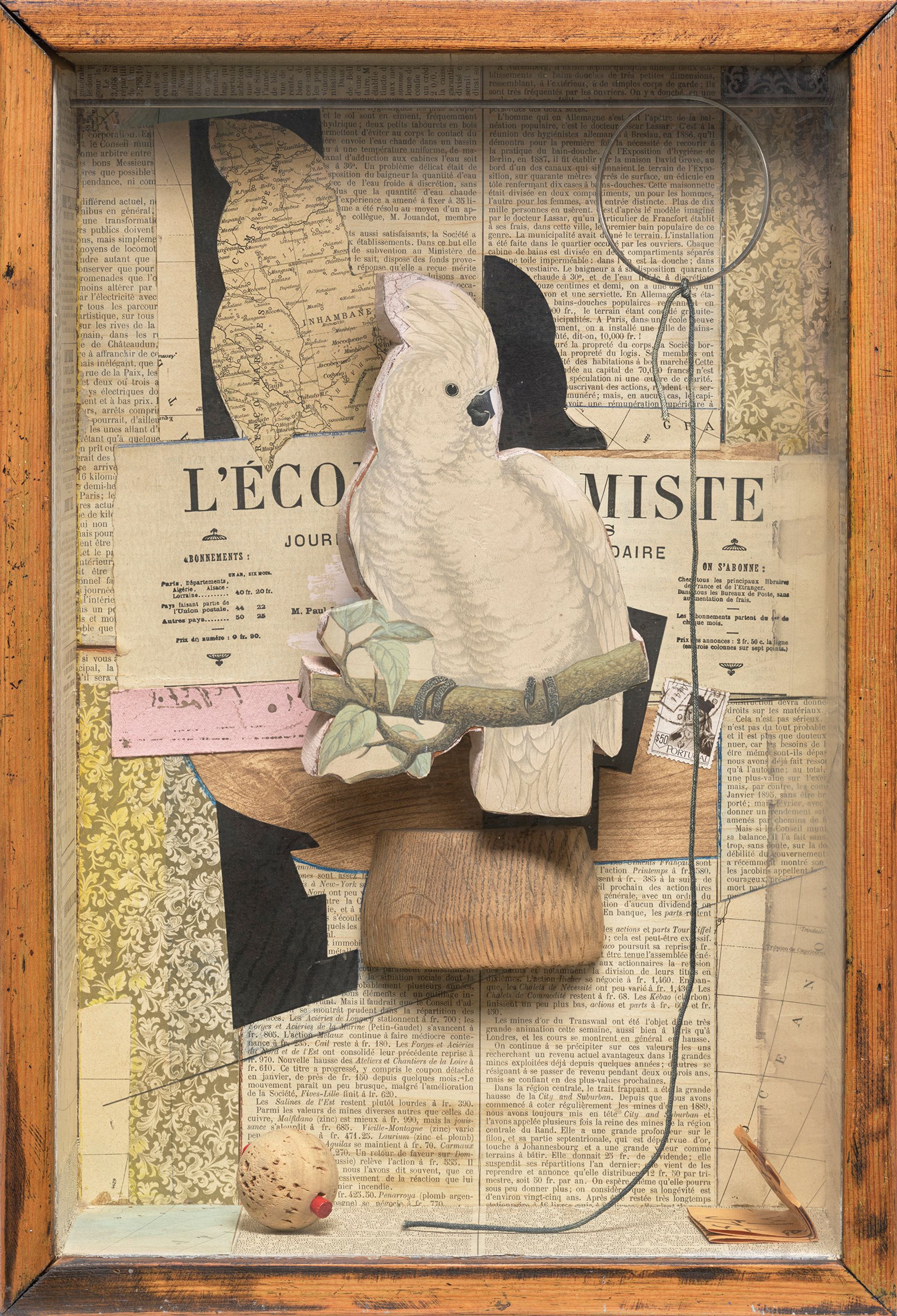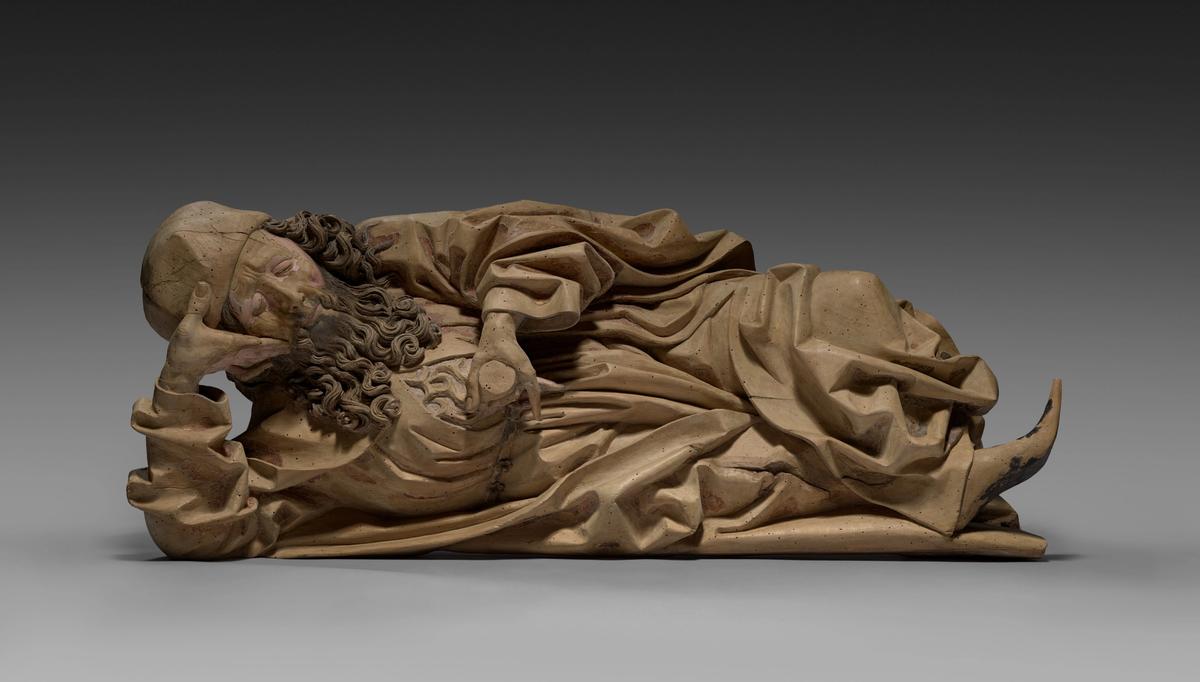Jesse (around 1500) by Veit Stoss
Cleveland Museum of Art
This late Gothic limewood sculpture by the celebrated German woodcarver Veit Stoss was once part of an altarpiece centred on the Tree of Jesse, a popular medieval depiction of the ancestors of Christ descended from Jesse of Bethlehem, the father of King David. Here, the sleeping figure of Jesse grasps the base of the tree that has since been lost. According to the Cleveland Museum of Art, which acquired the sculpture from the London-based art dealer Alexander Rudigier, the altarpiece may have originally been made for a church in Nuremberg, where Stoss was active from 1496 until his death in 1533. Jesse will go on display on 1 March as an anchor of the museum’s gallery of German and Austrian Gothic art.

Veronica Ryan’s Breadfruit is the first permanent public sculpture by a Black female artist in the UK © University of Warwick
Breadfruit (Moraceae) (2021) by Veronica Ryan
University of Warwick, UK
The University of Warwick in the UK has purchased an edition of Veronica Ryan’s 3ft-high bronze sculpture Breadfruit, one of a trio of Caribbean fruit forms that earned her the Turner Prize in 2022. Ryan’s work—the first permanent public sculpture by a Black female artist in the UK—was originally commissioned by the London borough of Hackney to commemorate the Windrush generation who emigrated to Britain from the Caribbean. The sculpture is now installed outside the Warwick Arts Centre. “Representation and cultural visibility being evident in public spaces is crucial,” Ryan said in a statement. The acquisition was supported by the Victoria and Albert Museum, the Contemporary Art Society, Arts Council England and the University of Warwick.

Joseph Cornell’s A Parrot for Juan Gris (1953-54) draws on the Cuban artist’s use of black silhouettes and cut-outs Courtesy of National Gallery of Art, Washington, DC
Joseph Cornell gift from Robert and Aimee Lehrman
National Gallery of Art, Washington, DC
Joseph Cornell spent most of his life in Flushing, Queens, but made countless imaginary voyages through his signature glass-fronted shadow boxes. Each was a micro-museum of trinkets and ephemera assembled in loving tribute to his wide-ranging interests: theatre, ballet, exotic birds and astronomy, to name a few. Twenty boxes spanning all his major series, plus seven late collages, have now joined the National Gallery of Art (NGA), donated by Robert and Aimee Lehrman. Several boxes relate to artists and works in the NGA collection, such as A Parrot for Juan Gris (1953-54), which borrows the Cubist painter’s use of black silhouettes. The gift single-handedly transforms the NGA into one of the world’s leading centres of Cornell’s work, in the same city as his archive at the Smithsonian American Art Museum.


